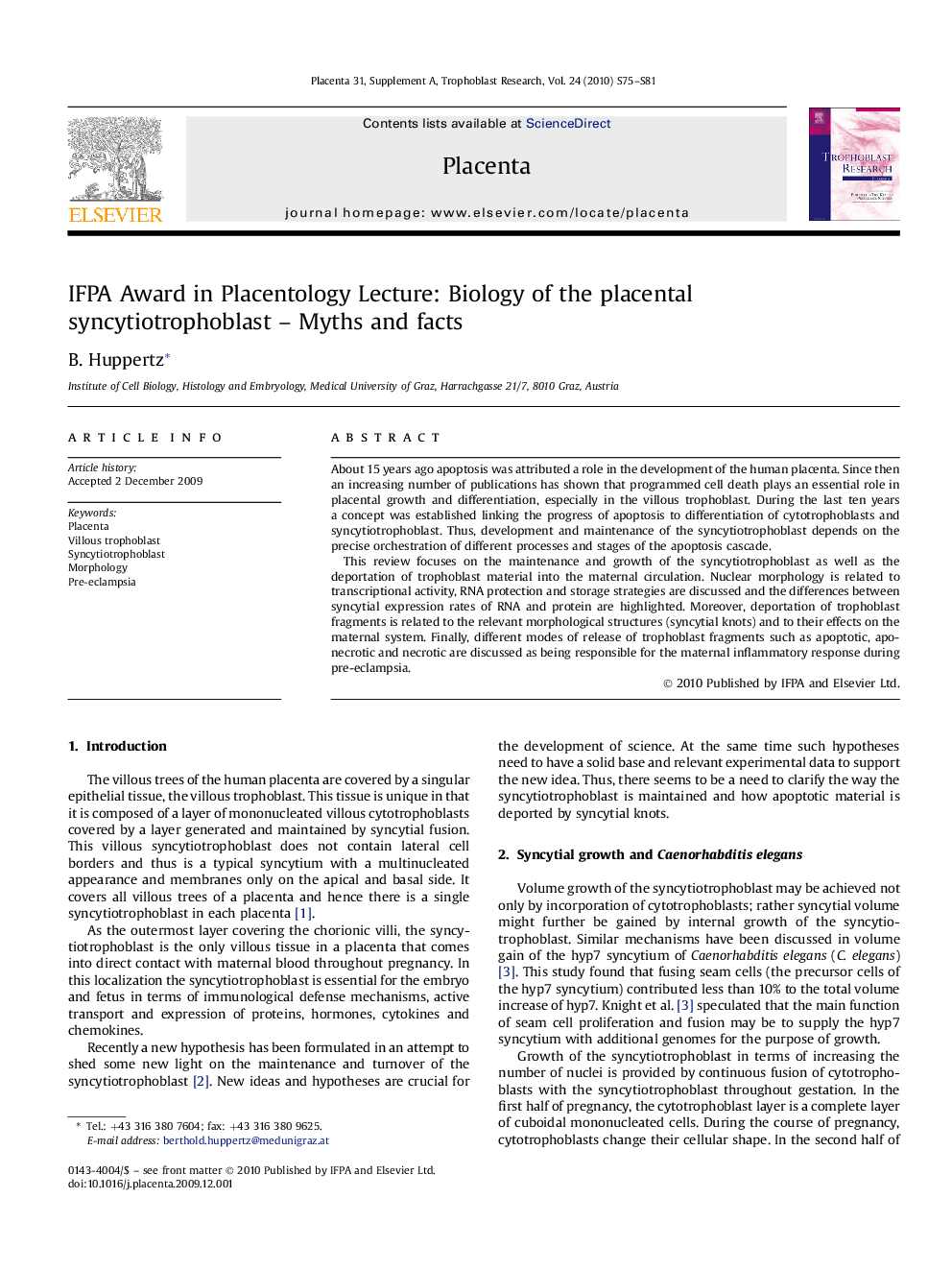| Article ID | Journal | Published Year | Pages | File Type |
|---|---|---|---|---|
| 2789993 | Placenta | 2010 | 7 Pages |
About 15 years ago apoptosis was attributed a role in the development of the human placenta. Since then an increasing number of publications has shown that programmed cell death plays an essential role in placental growth and differentiation, especially in the villous trophoblast. During the last ten years a concept was established linking the progress of apoptosis to differentiation of cytotrophoblasts and syncytiotrophoblast. Thus, development and maintenance of the syncytiotrophoblast depends on the precise orchestration of different processes and stages of the apoptosis cascade.This review focuses on the maintenance and growth of the syncytiotrophoblast as well as the deportation of trophoblast material into the maternal circulation. Nuclear morphology is related to transcriptional activity, RNA protection and storage strategies are discussed and the differences between syncytial expression rates of RNA and protein are highlighted. Moreover, deportation of trophoblast fragments is related to the relevant morphological structures (syncytial knots) and to their effects on the maternal system. Finally, different modes of release of trophoblast fragments such as apoptotic, aponecrotic and necrotic are discussed as being responsible for the maternal inflammatory response during pre-eclampsia.
